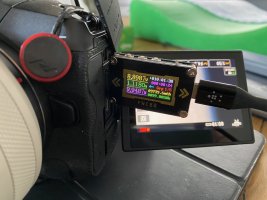regarding the battery… it may be convenient for obvious reasons, but canon still doesn’t match sony when it comes to battery life. So I’m that respect having the flash draw power out of the camera’s battery is also inconvenient.I also think every old hotshoe equipemnt should mount directly to the R3, albeit without (perfect) weather sealing.
I think the smaller size of the ST-E10 over the ST-E3-RT is worth the purchase alone. The R3 with the mounted ST-E10 will fit more easily into my bag, and this is great. Weight is a minor issue, but the fact that the ST-E10 doesn't need batteries to operate is another plus in the convenience category.
Additionally the ST-E10 is much cheaper than the ST-E3-RT, so it is not tooo heavy an investment.
I also almost never use flashes mounted directly to the hot shoe, and even less so in rain. With *** built in, there is also no need for the ***-E2-receiver (which I do use in rain), so I think there is very little need for the hot shoe adapter.
battery performance has generally been my main issue with canon. Even in the Nikon vs canon heydays it nikon always did better than canon regarding battery life. Now with MILC it is even more important for canon to actually turn their attention to that and make some major improvements.
I love my R5. But if I am birding and literally waiting for long periods of time for a shot I do worry about battery drainage. That was never really an issue when I was shooting the A7III
Upvote
0

